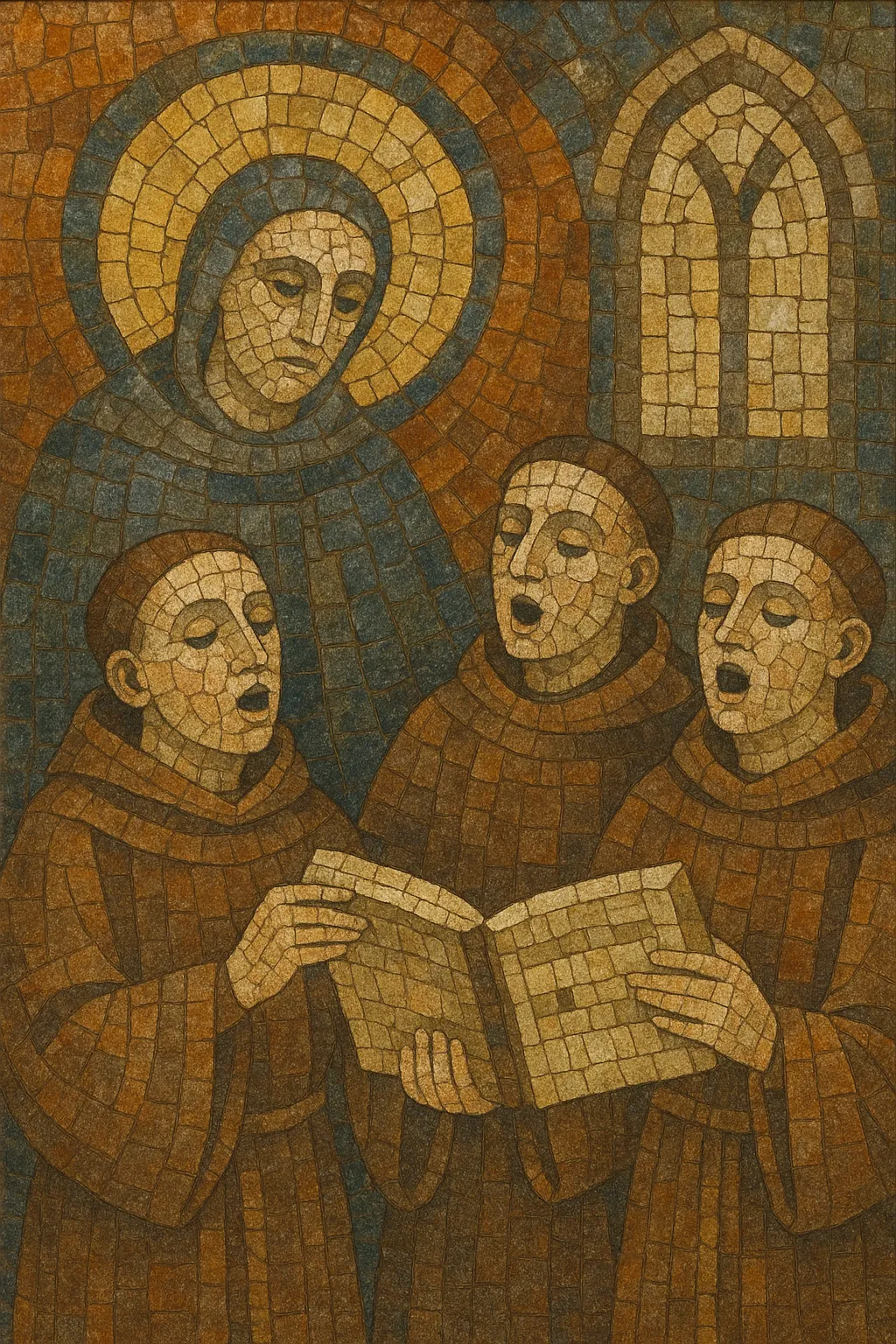
Sarum chant (the plainchant of the Use of Salisbury) is the medieval English variant of Western plainchant used across much of England, Wales, and parts of Ireland and Scotland before the Reformation. It belongs to the broader Gregorian tradition, but preserves local melodic, textual, and ceremonial peculiarities tied to the Sarum Rite.
It is monophonic, modal, and unaccompanied, designed for Latin liturgical texts in the Mass and Divine Office. Its melodies range from simple recitation formulas to elaborate melismas, and its rhythm follows the natural accent and syntax of the text rather than strict meter. Distinct processional customs and a rich Proper (seasonal and festal chants) give the repertory its characteristic color.
The Sarum Use was standardized in the late 11th and early 12th centuries under Bishop St. Osmund at Salisbury (Old Sarum). While rooted in the Roman/Gregorian tradition, local practice, regional saints’ cults, and cathedral customs shaped a distinctive chant repertory and ceremonial. By the 12th–13th centuries, Sarum books (Antiphoner, Gradual, Processional, Breviary) were widely copied, spreading Sarum chant as the de facto English rite.
Through the High and Late Middle Ages, Sarum chant guided the daily Mass and Divine Office in cathedrals, collegiate churches, and monastic houses. Its Proper chants (introits, graduals, alleluias, offertories, communions) and Office items (antiphons, responsories, hymns) exhibit modal variety and melodic nuance while adhering to Western plainsong syntax. The Sarum Tonary organized psalm tones and modal practice, supporting a large, practical singing tradition.
After the English Reformation (16th century), the Sarum books were progressively replaced by the Book of Common Prayer and English-language liturgy. Public use of Sarum chant faded, though manuscripts and early printed sources survived in libraries and archives. Elements of Sarum ceremonial and textual selection indirectly informed later Anglican worship, even as chant itself ceased to be the living norm.
From the 19th century onward, antiquarians, liturgists, and musicologists edited, cataloged, and transcribed Sarum sources. In the 20th and 21st centuries, early-music ensembles, cathedral choirs, and scholars produced recordings and practical editions, reviving Sarum chant for performance and study. Digital facsimiles and modern critical transcriptions (e.g., of the Antiphoner, Gradual, and Processional) have made the repertory increasingly accessible to performers and researchers.
Start from a Latin liturgical text (Mass or Office) appropriate to the Sarum calendar and books (Antiphoner, Gradual, Processional, Breviary). Identify the chant’s function (e.g., Introit, Antiphon, Responsory), which determines its formulaic structure and level of melisma.
Choose one of the eight ecclesiastical modes (finals on D, E, F, G with authentic/plagal pairs). Compose within a narrow-to-moderate range, emphasizing cadential pitches typical of the chosen mode. Use neumatic writing for syllabic clarity and melismas for textual highlights (e.g., on key theological words).
Write in free rhythm guided by the prose accent and punctuation of the Latin. Avoid bar lines and metrical regularity. Performance should be unison, unaccompanied, with a clear, speech-like phrasing and minimal vibrato. Cantor–choir alternation (call-and-response) and antiphonal or responsorial structures are common.
For psalms and canticles, adapt appropriate Sarum psalm tones with proper intonation, reciting note, mediant, and termination. Observe correct accentuation on cadences, matching the Latin word stress to the melodic formula.
Notate in square neumes on a four-line staff, or use modern transcription while preserving the rhythmic freedom. Keep harmony to a minimum (historically none); if used for pedagogy, a soft pedal drone may help intonation but is not stylistic. Aim for cathedral acoustics in phrasing: let resonance complete cadences, and allow breaths at textual punctuation.

